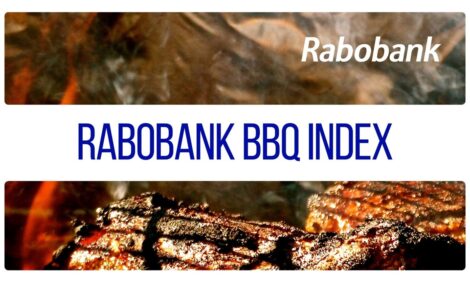



Prices up for most meat options as grilling season nears
Texas Crop and Weather ReportConsumers are likely to see higher prices for beef and chicken at grocery stores as grilling season kicks off over the Memorial Day weekend, said a Texas A&M AgriLife Extension Service expert.
David Anderson, Ph.D., AgriLife Extension economist in the Texas A&M College of Agriculture and Life Sciences Department of Agricultural Economics, Bryan-College Station, said year-over-year prices for beef and chicken were up while prices for pork cuts fell slightly.
“We get a seasonal run going into Memorial Day as the weather gets nicer and people start firing up their grills,” he said. “Certain meat cuts peak around the holidays, but demand during grilling season can influence prices across most everything beef, poultry and pork.”

Beef prices keep climbing
Retail beef prices continue to set records. Anderson said the Consumer Price Index, which he considers the monthly measurement of average prices and inflation, indicates consumers have been dealing with beef prices creeping higher and higher across cuts.
Wholesale beef prices continue to climb, some cuts more than others, he said. Wholesale Choice ribeye steaks were $9.75 per pound at the end of April 2024 but reached $14.18 per pound the same week this year. Strip loins, another popular steak cut, are $10.72 this year compared to $9.28 per pound last year.
Retail prices for lean ground beef, which includes lower-cost cuts and trimmings, took a similar path – $6.73 per pound last year to $7.48 per pound this year, Anderson said. A pound of ground beef was $4.50 in April 2019.
Briskets skyrocketed in price over recent years as interest in low-and-slow barbecue boomed. But prices on the popular cut experienced a relatively small increase in wholesale markets compared to last year and remained lower than previous peaks.
Anderson expects the latest year-over-year price spike could rise more as grilling season begins and demand increases.
Lower beef production pressures supplies
Higher input costs for beef cattle production have slimmed margins for Texas ranchers, but high cattle prices have been relatively good for producers, Anderson said.
However, beef production is down over recent years, he added.
The U.S. cow herd remains the smallest since 1961. Multiple years of drought in Texas, which accounts for more than 14% of beef cattle nationally, factored into that decline. Fewer cows going to market puts pressure on supplies and ultimately pushed prices upward at grocery stores, Anderson said.
“Beef cattle weights are up overall, which helps mitigate the effect of a smaller herd, but there are still only two briskets and so many rib-eyes per head,” he said. “A lot of ground beef comes from cull cattle, and the low herd numbers and lower production translate into tighter supplies of ground beef.”
Chicken prices fly, pork prices wallow
As beef production decreased, other meat options favored during grilling season like chicken and pork have increased. However, Anderson said higher pork and poultry production have not translated into the same price paths for those options.
Despite more production of broiler chickens — the birds that end up in grocery stores and restaurants — and increased supplies to meet demand, prices are still going up, he said. Wholesale boneless, skinless chicken breasts were $1 higher per pound than this time last year – $2.75 per pound compared to $1.75 per pound.
Legs, another favorite for summer grilling, were 88 cents per pound compared to 72 cents per pound last year.
“That’s not much of a change compared to recent years, but it shows the underlying differences in the market for meats we consume – beef production goes down, prices go up; chicken production goes up, prices still go up,” he said. “There are different market pressures at play, even down to the cut, whether it’s rib-eye steaks and briskets or chicken breasts and legs or wings.”
Pork on the other hand increased production and prices dipped, he said. At wholesale, pork loins were 99 cents per pound last week compared to $1.30 last year, and spareribs were $1.53 per pound compared to $1.79 per pound. Retail pork chops were $4.34 per pound last year and were $4.26 per pound this year.
Meat demand remains strong
Anderson said the pork industry has struggled to find profitability amid poor prices. But it makes pork a value option for consumers.
There is no data suggesting higher prices are turning consumers away from beef to chicken or pork, Anderson said. The per pound price differences give consumers grilling options, and the ability to find even better deals at grocery stores through discounts or specials going into the Memorial Day holiday and beyond.
“There is some evidence that people are buying what they want despite concerns about the overall economy,” he said. “Meat demand has been quite strong, which means people are paying those higher prices. We’ll have to see whether that changes if seasonal demand pushes prices further.”








